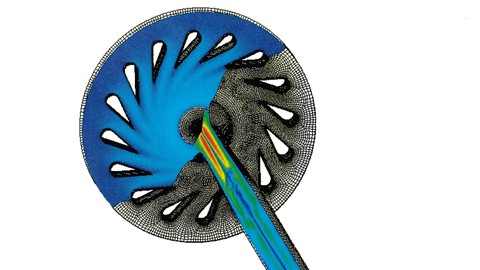
Published 1/2023
MP4 | Video: h264, 1280x720 | Audio: AAC, 44.1 KHz
Language: English | Size: 3.46 GB | Duration: 6h 19m
Introduction to computational fluid dynamics (CFD) and emerging trends
What you'll learn
The student will learn and understand the finite volume method for computational fluid dynamics (CFD)
The student will gain a good introduction to the physics of turbulent flows and learn to apply the various turbulence models in CFD.
The student will learn how to apply CFD to environmental flows, including atmospheric dispersion, ground water flow, surface water flow including tsunamis.
The student will get a perspective on emerging trends, including the impact of deep machine learning and AI in CFD.
Requirements
Basic Fluid Mechanics, Numerical Methods
Description
Computational Fluid Dynamics (CFD) has emerged as an essential component of the design and analysis process for a wide range of engineering applications. CFD tools enable an design engineer to simulate and understand the impact of the underlying physics, mathematics, and numerical concepts on an engineering system.This introductory course addresses a wide range of topics from fundamental aspects of finite volume method to the state-of-the-art technologies, such as application of the latest Machine learning techniques to Computational Fluid Dynamics (CFD).This course will cover;Detail understanding of the finite volume method for computational fluid dynamics (CFD).Critical understanding of the Governing equations including; The balance laws, Convective and Diffusive Fluxes, Accumulation and Source/Sink Terms, The basic Governing Equations in Integral and Differential forms etc.The pressure projection and SIMPLE algorithm, Adaptive grid refinement, Gridles methods etc.Introduction to the physics of turbulent flows and learn to apply the various turbulence models in CFD. Detail discussion on various turbulence models, energy cascading, Kolmogorov scales, Near wall behaviour, Wall function, Y+, etc...How to apply CFD to environmental flows, including atmospheric dispersion, ground water flow, surface water flow including tsunamis.A detail perspective on emerging trends, including the impact of deep machine learning and AI in CFD
Overview
Section 1: Introduction
Lecture 1 CFD Background & A Brief History
Lecture 2 Governing Equations
Section 2: Finite Volume Method
Lecture 3 Introduction to Finite Volume Method - Part 1
Lecture 4 Finite Volume Method - Part II
Section 3: Pressure Projection
Lecture 5 Pressure Projection
Section 4: Introduction to Turbulence
Lecture 6 Introduction to Turbulence
Section 5: Environmental Flows
Lecture 7 Environmental Flows
Section 6: CFD of the Future
Lecture 8 Emerging Trends & CFD of the Future
Students and Researchers of Mechanical engineering, Chemical engineering, Aerospace Engineering and Civil engineering
Homepage
Recommend Download Link Hight Speed | Please Say Thanks Keep Topic Live
Links are Interchangeable - No Password - Single Extraction







